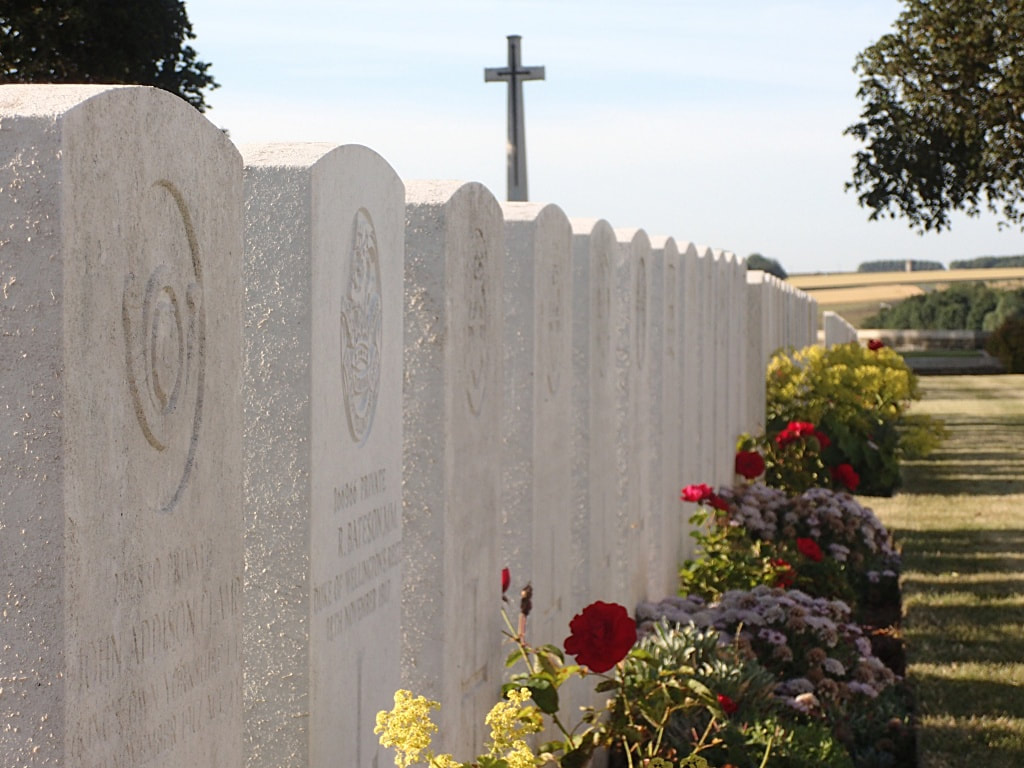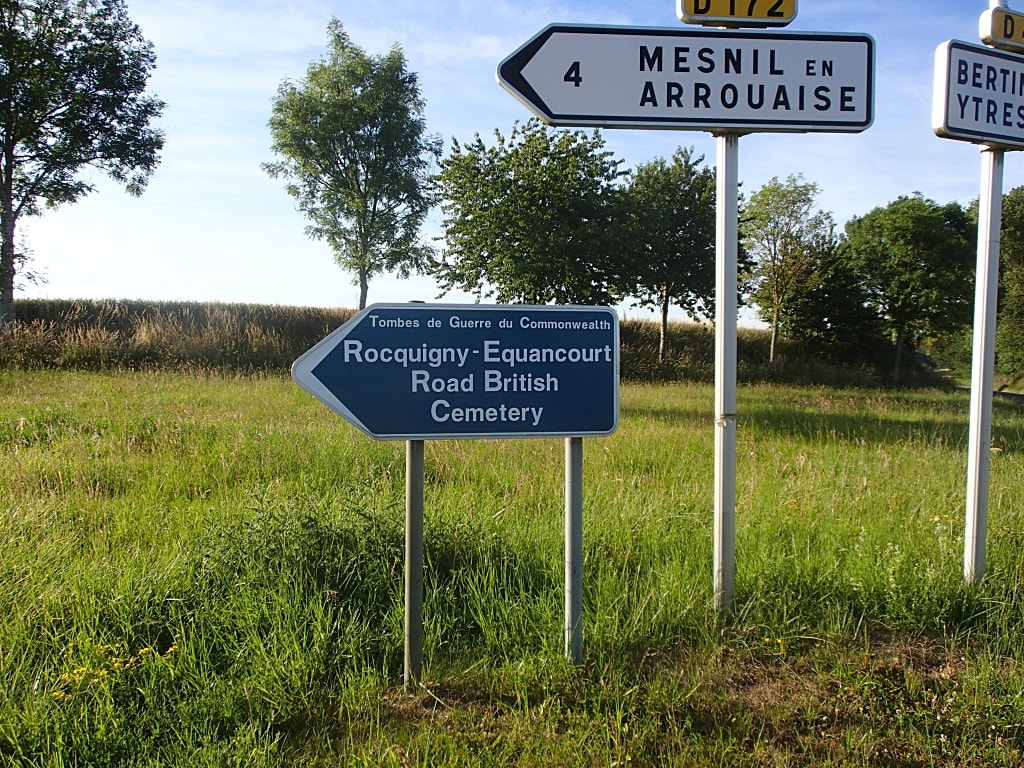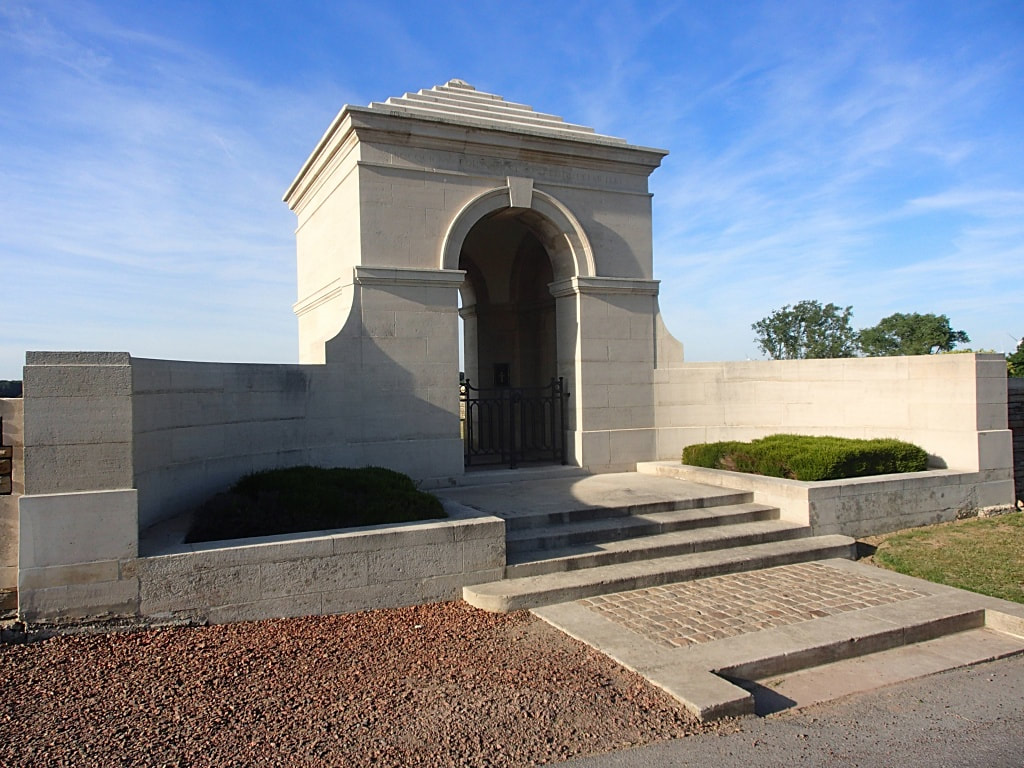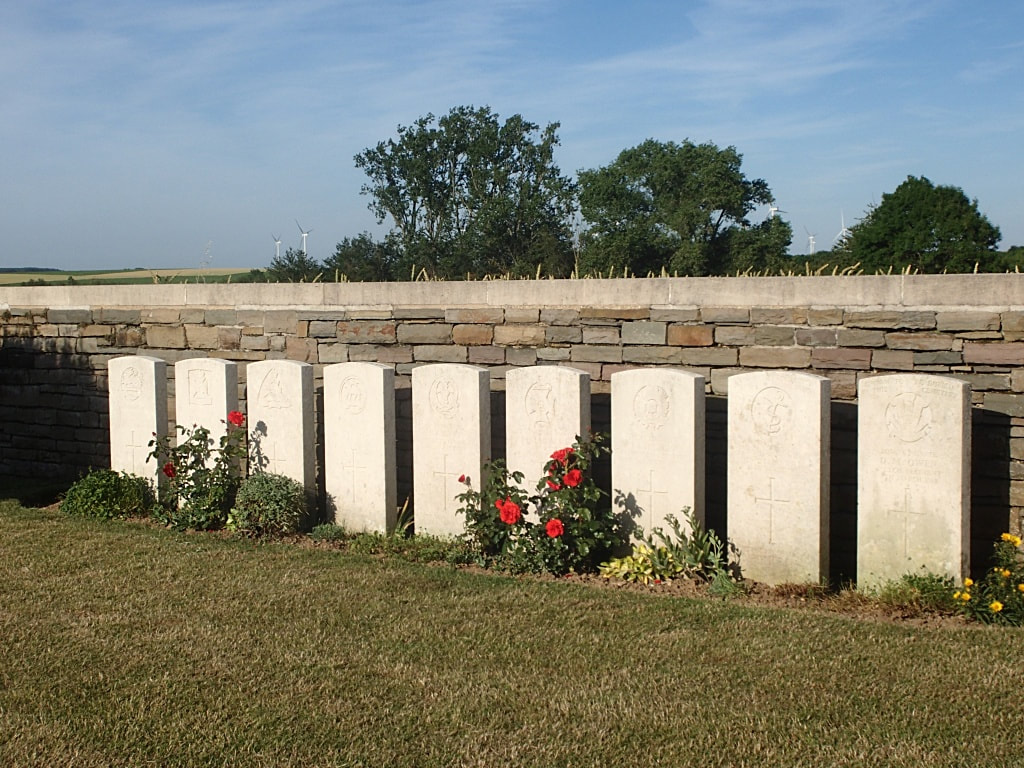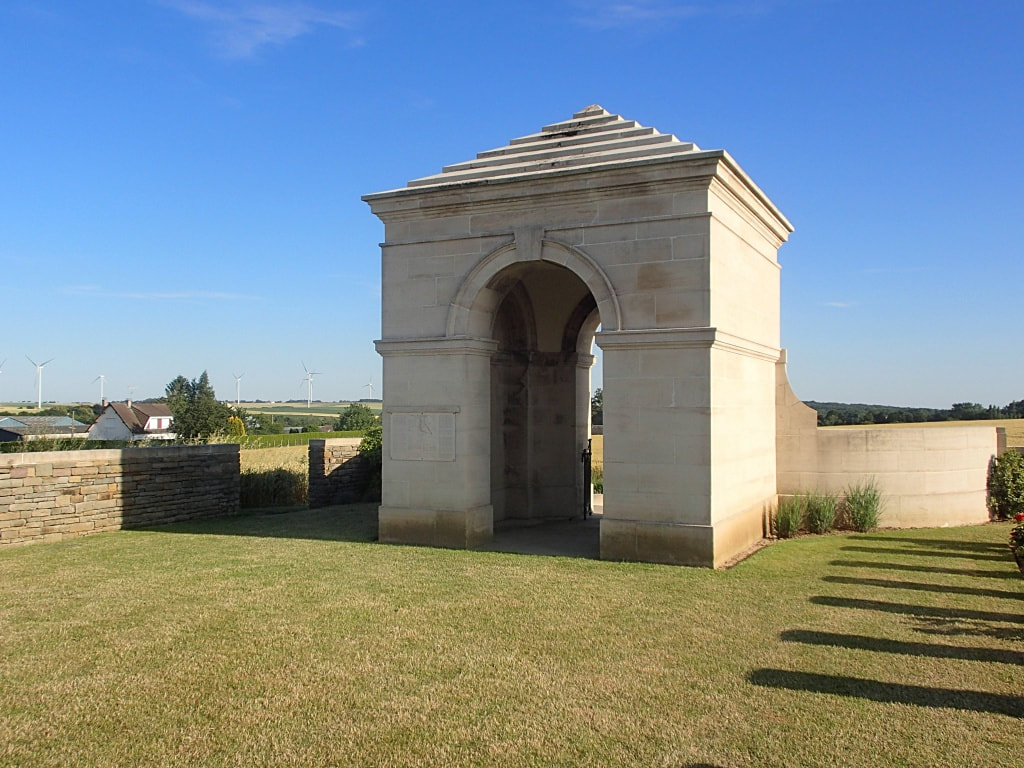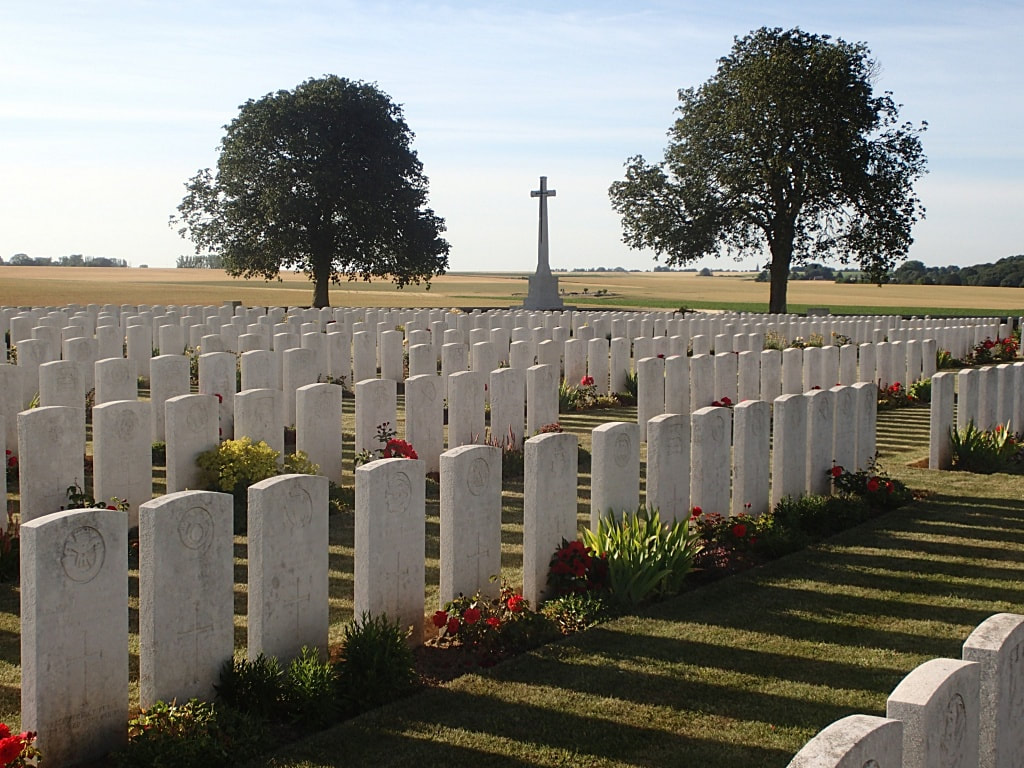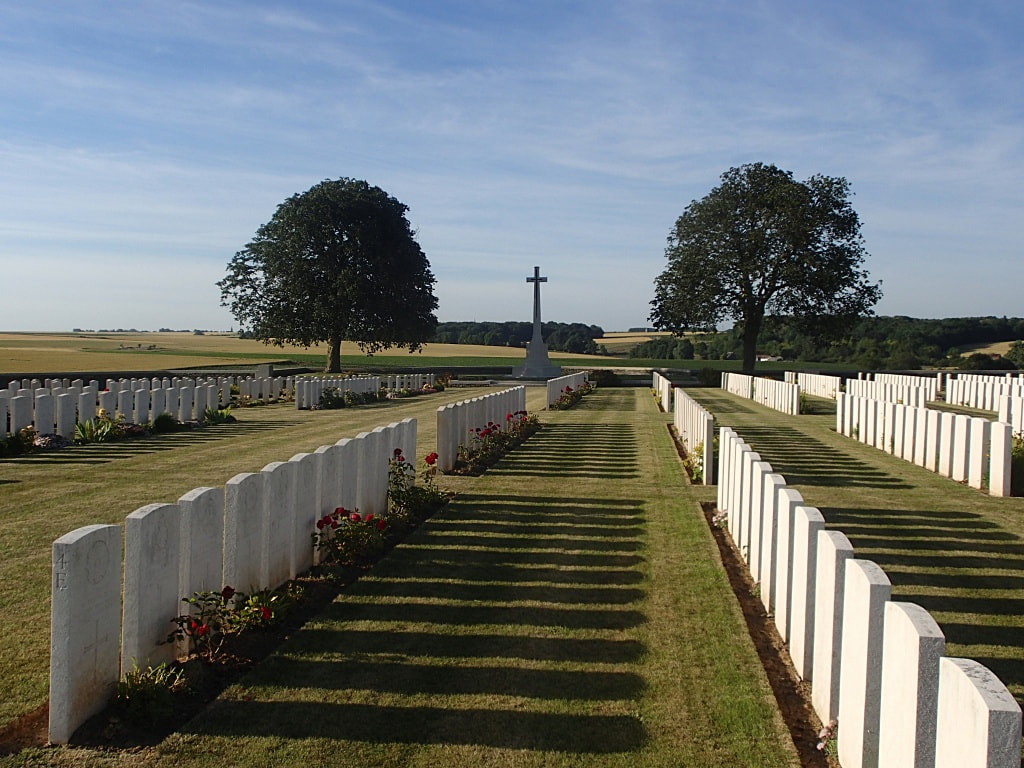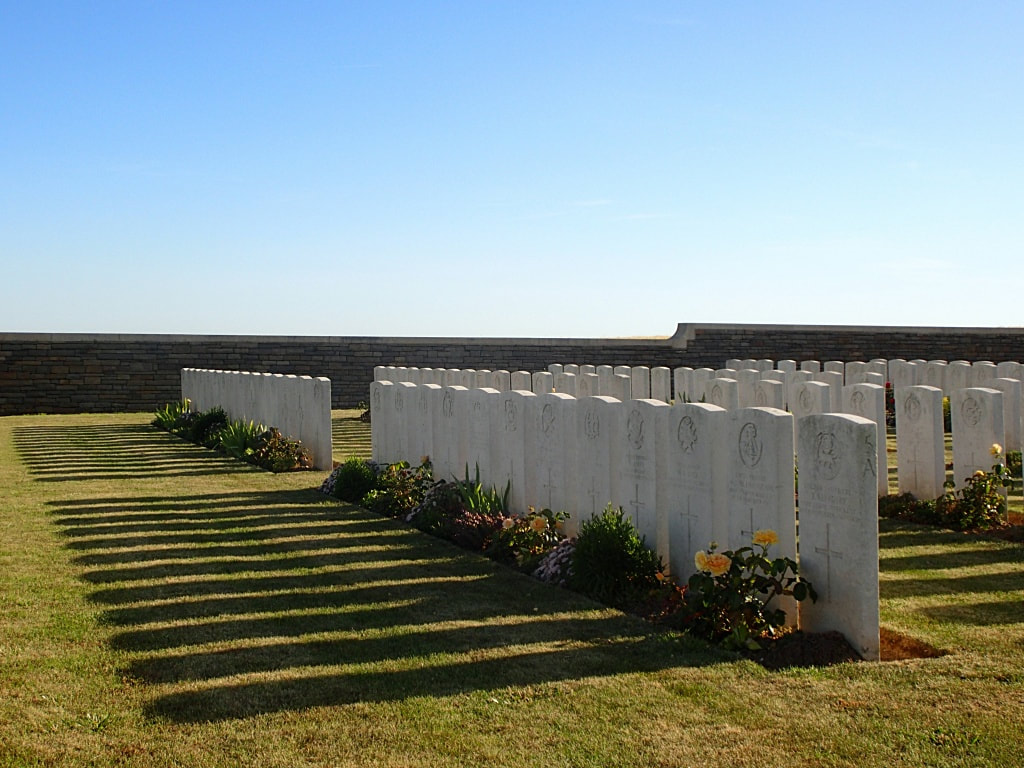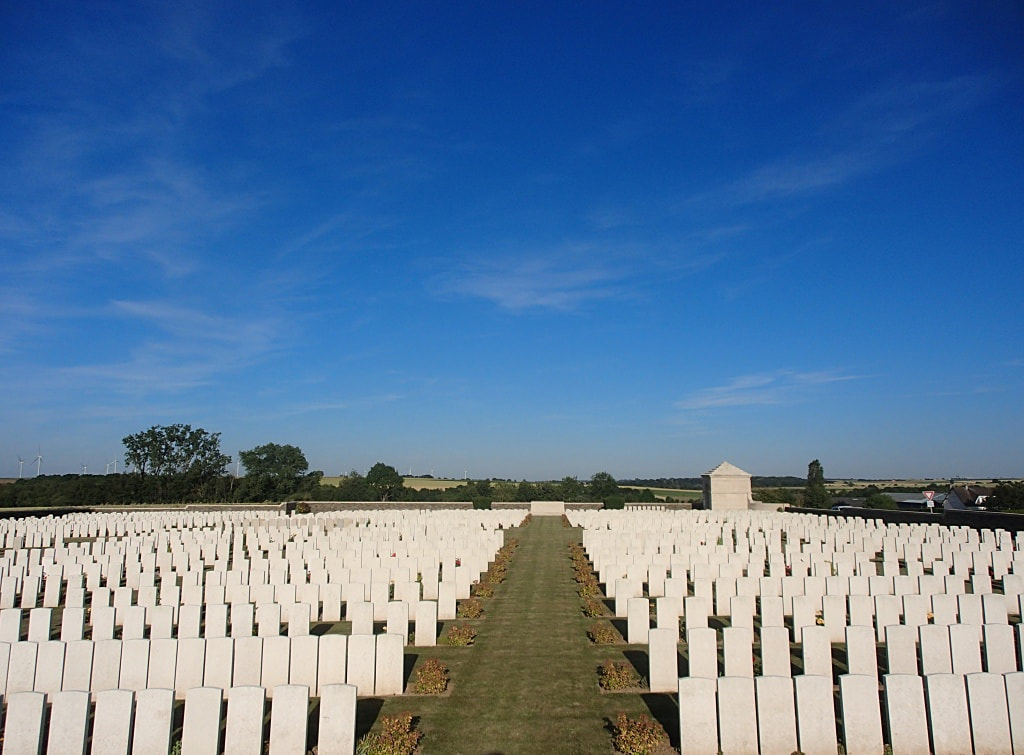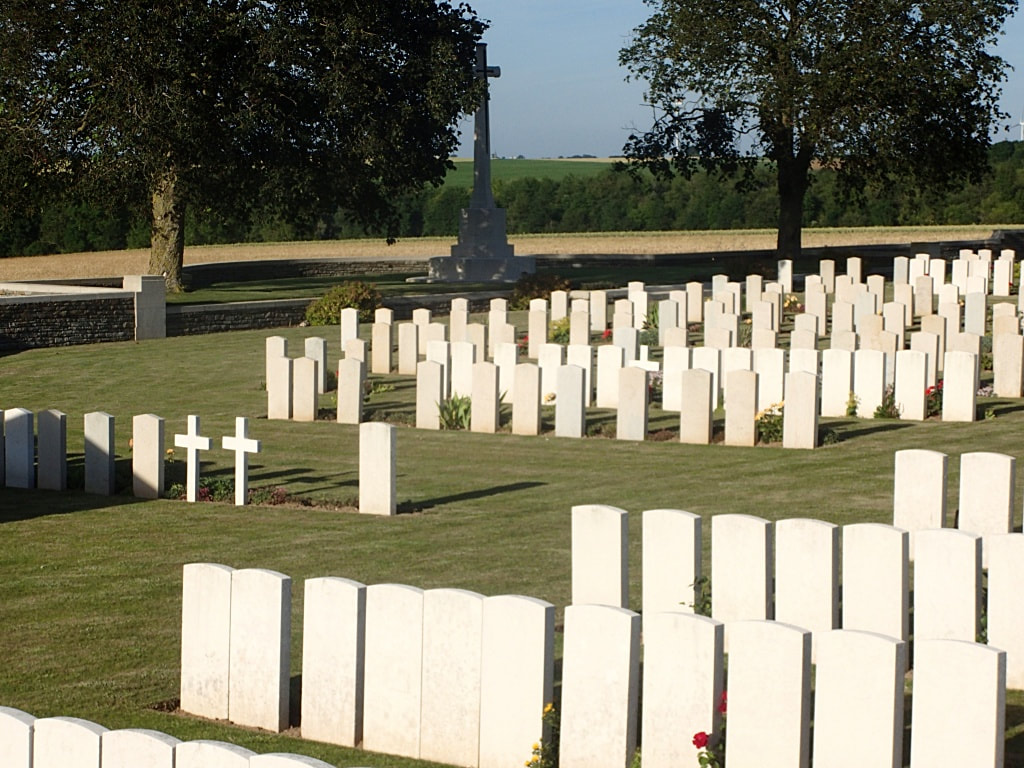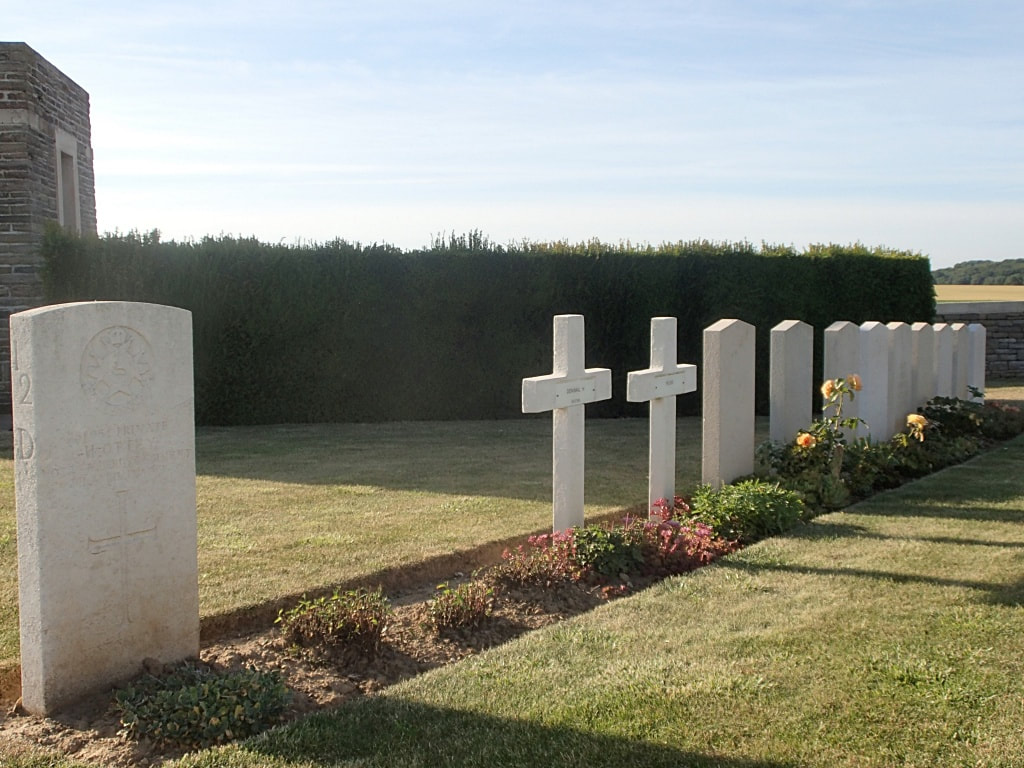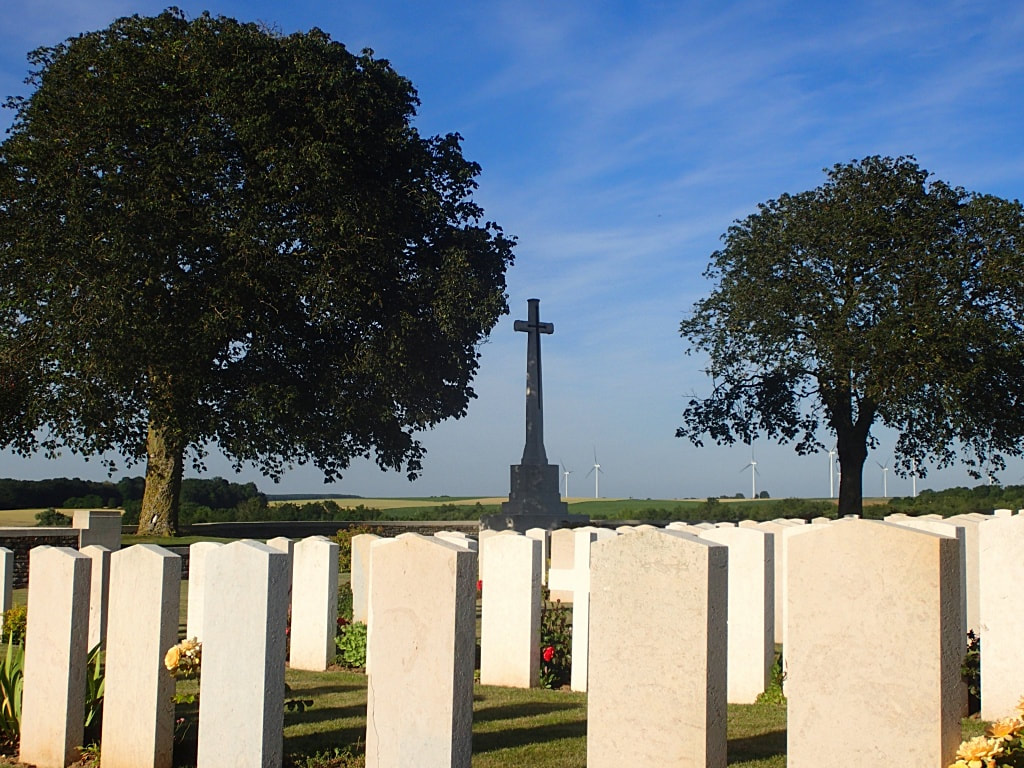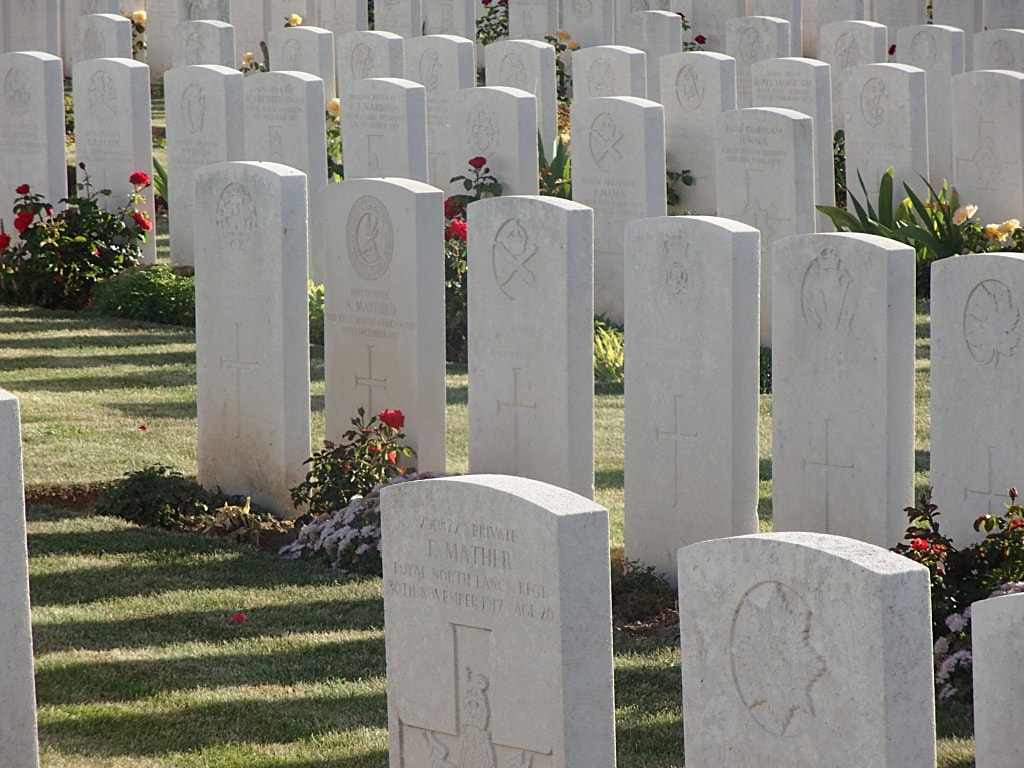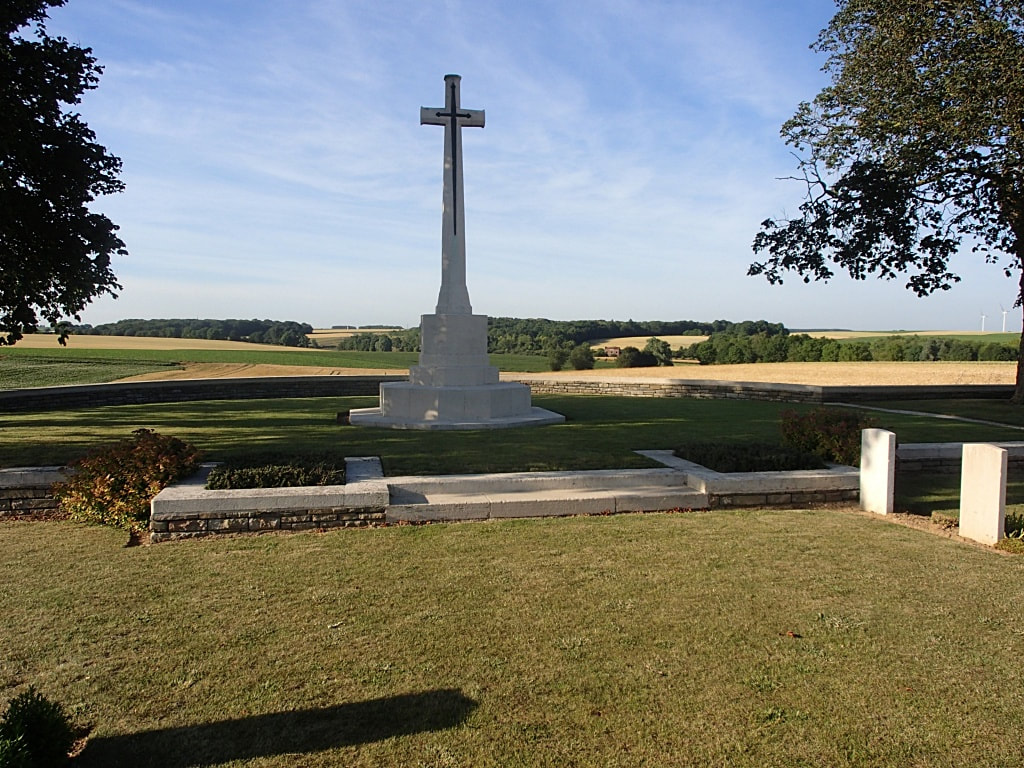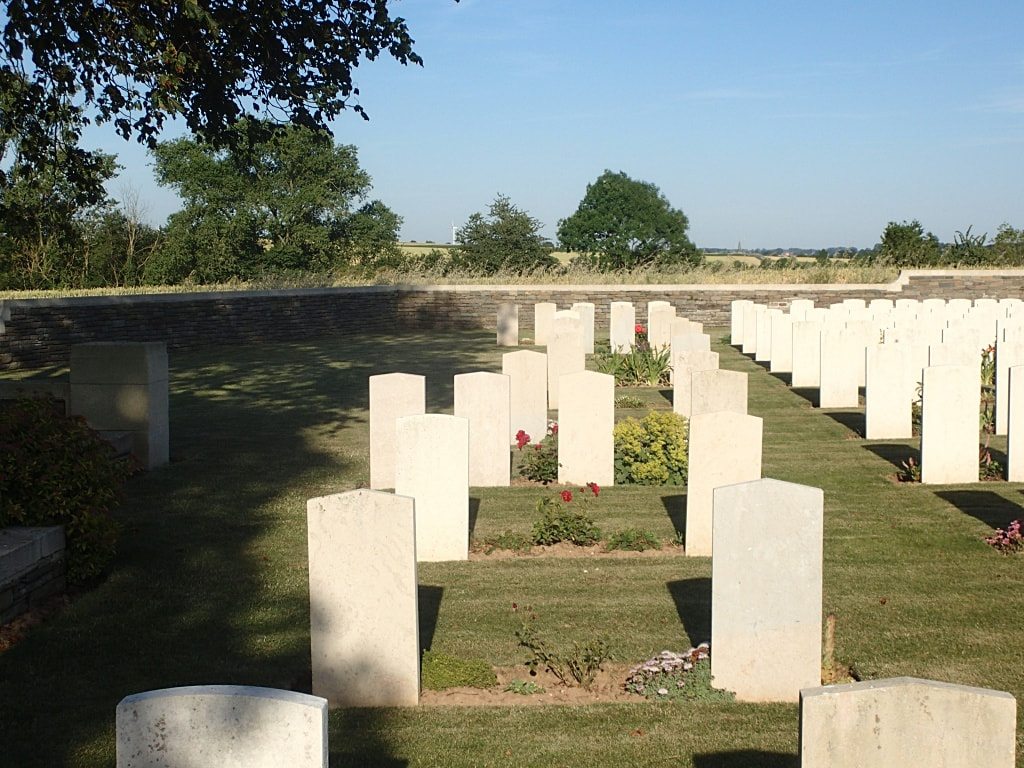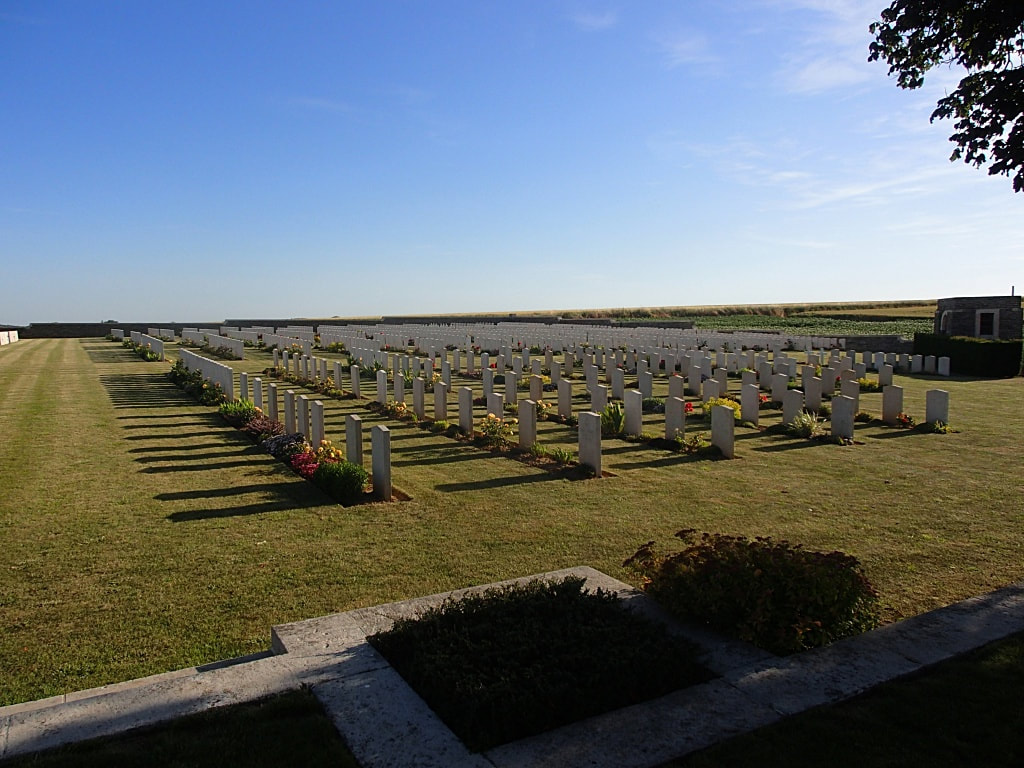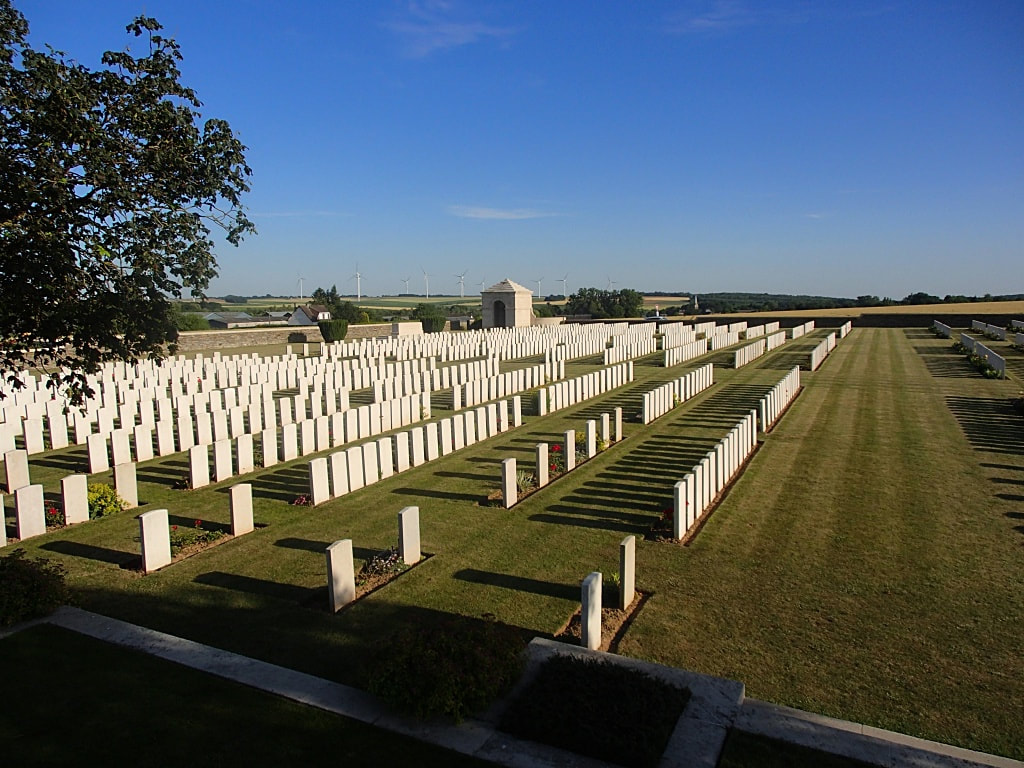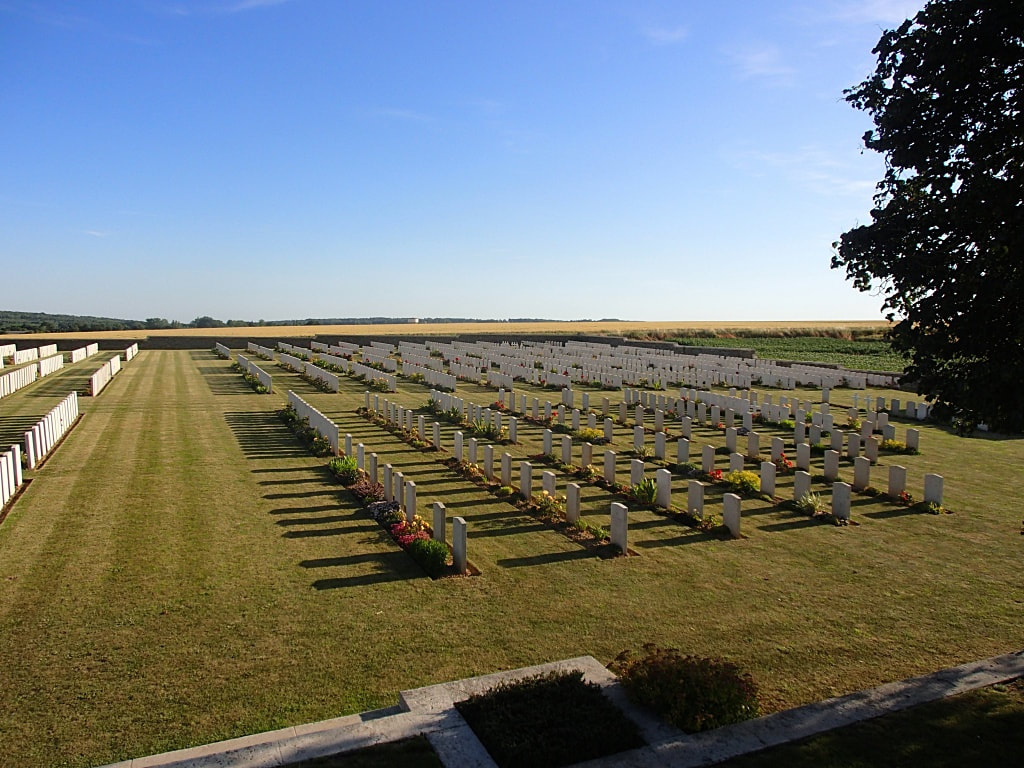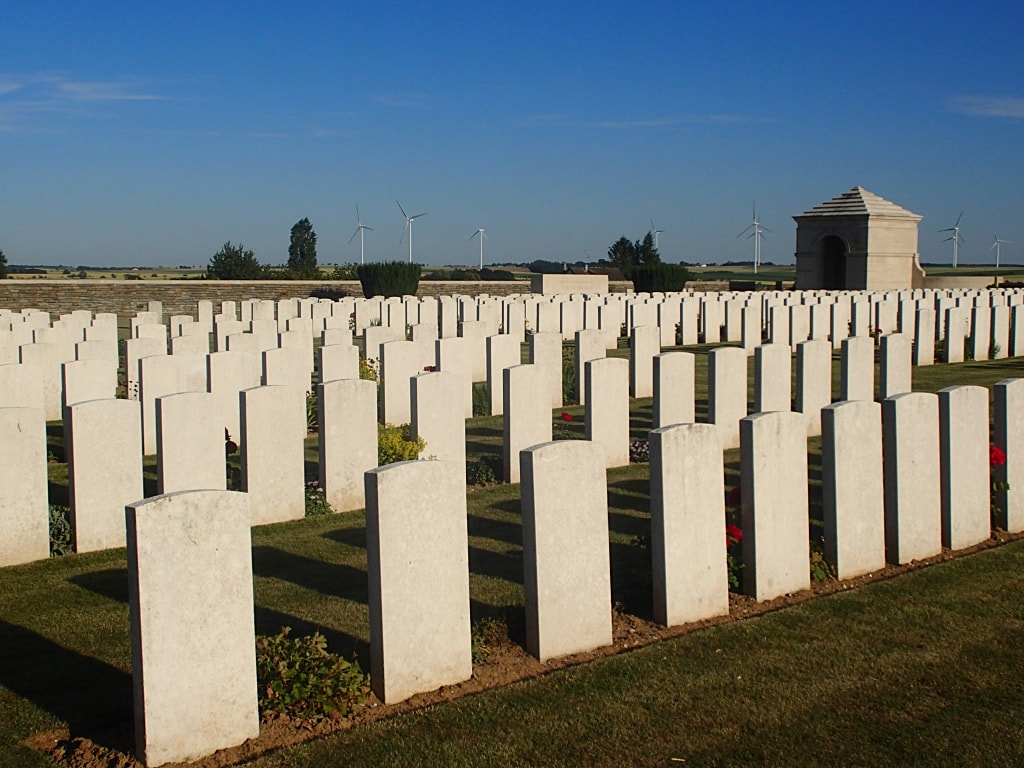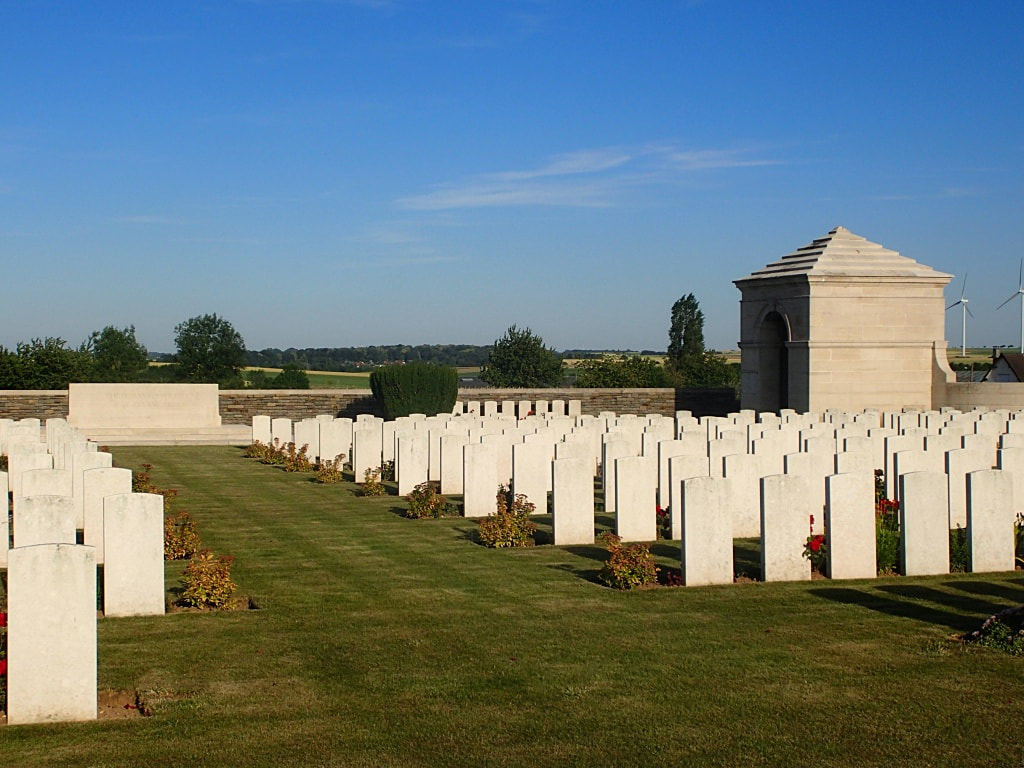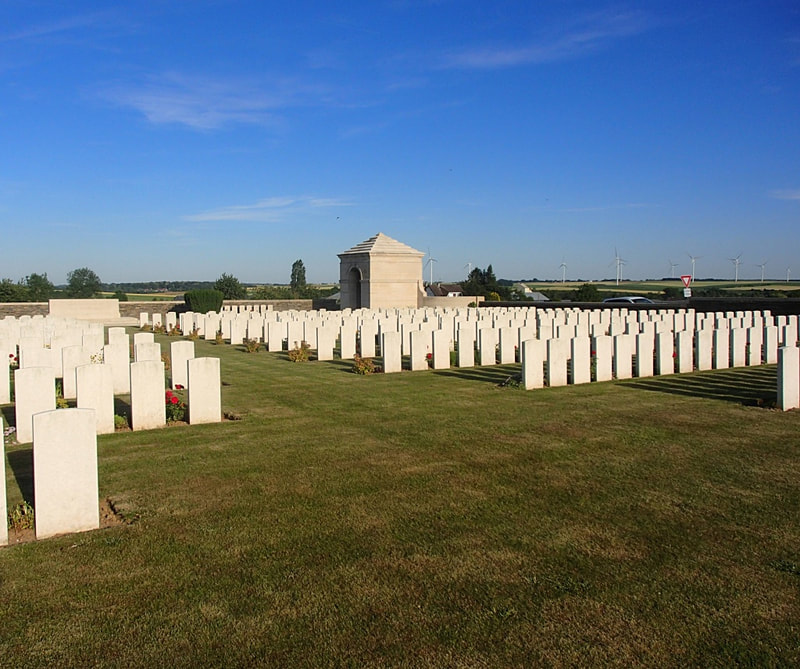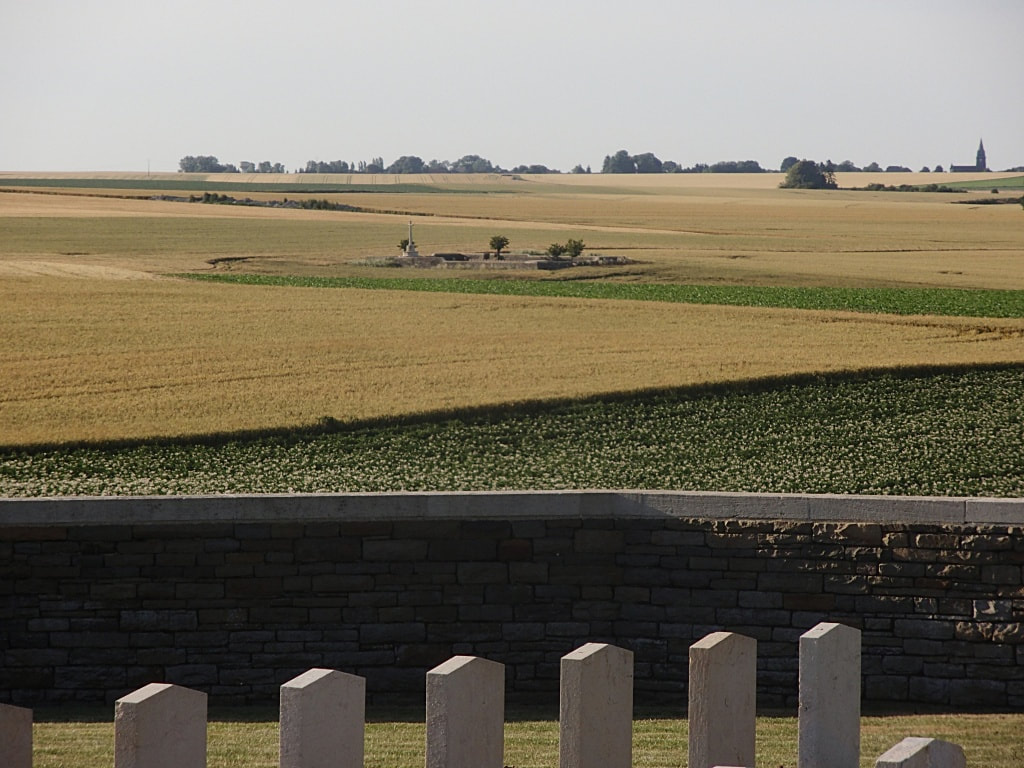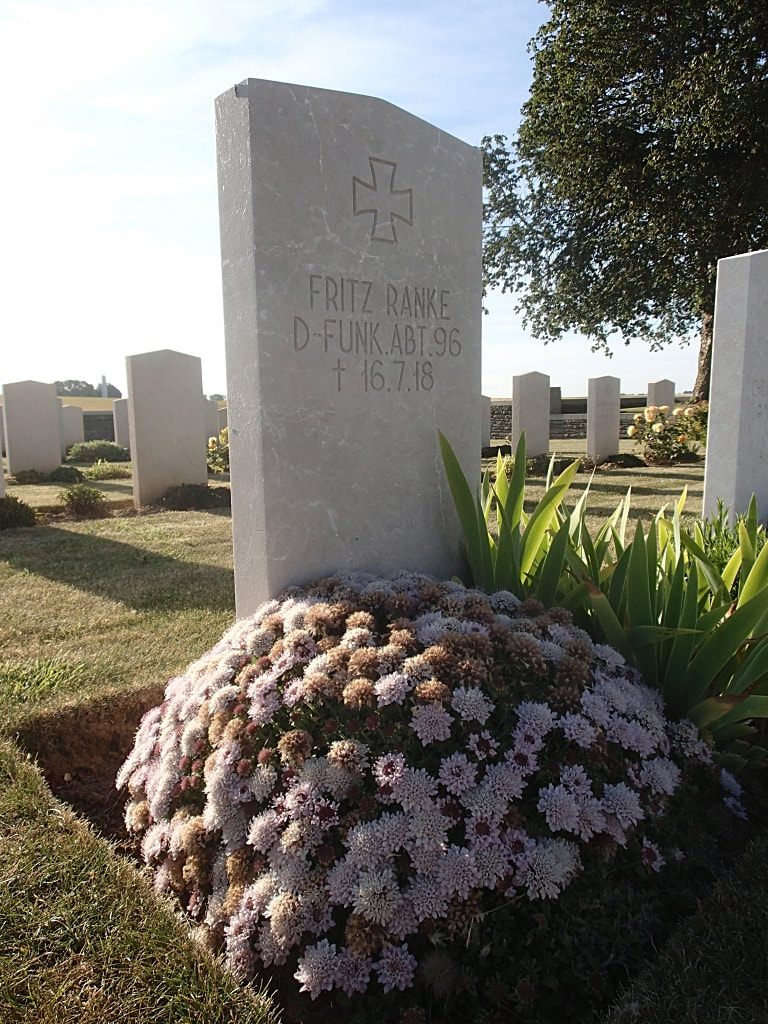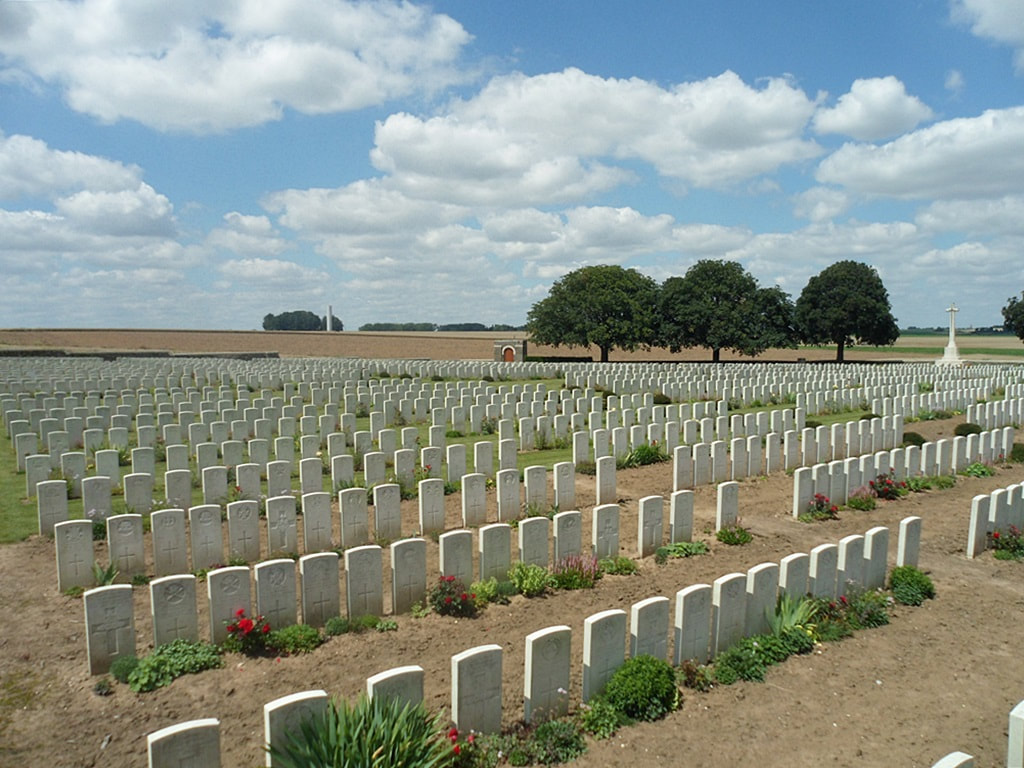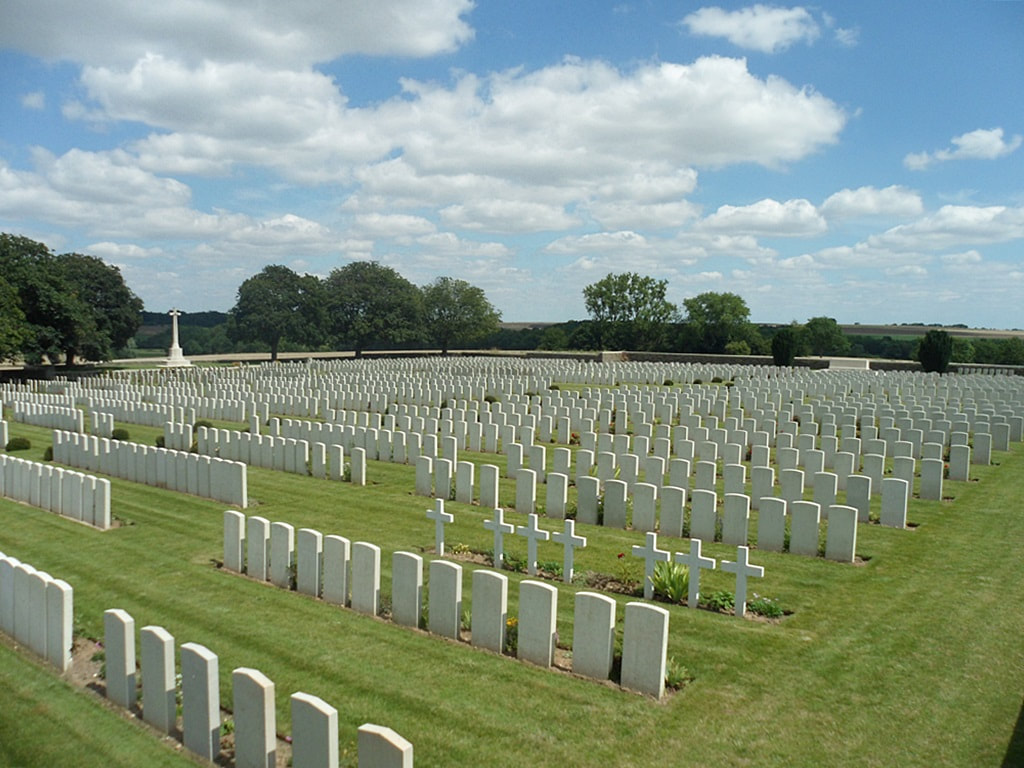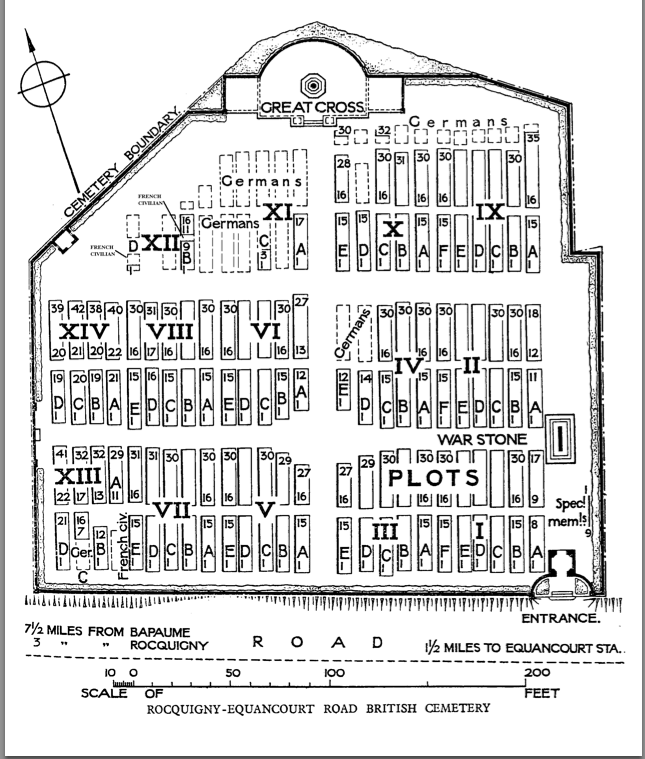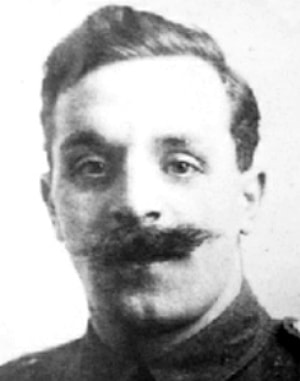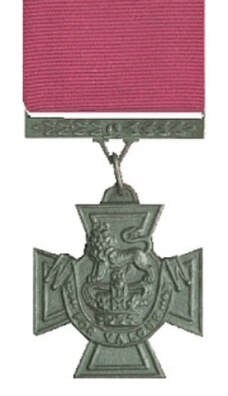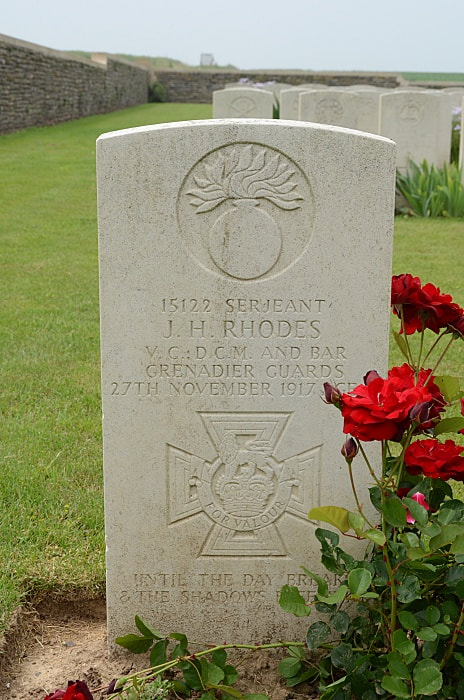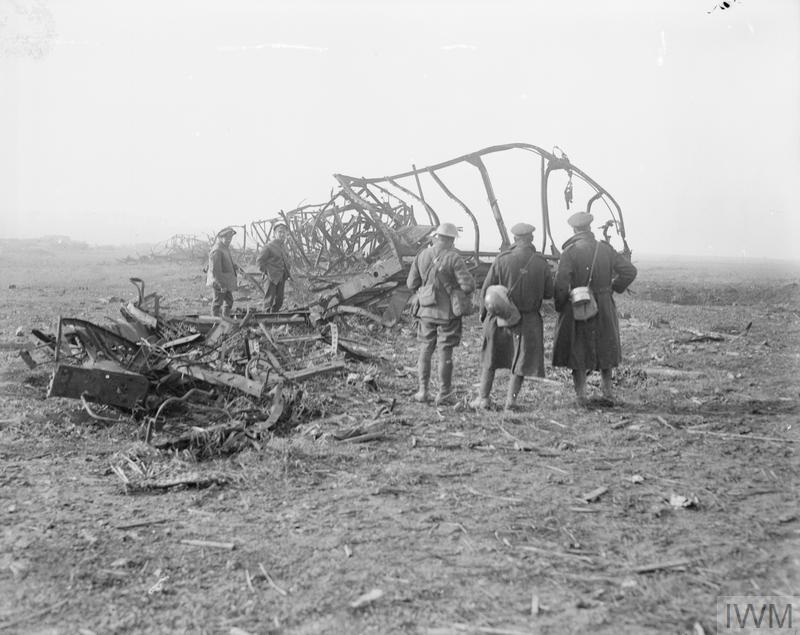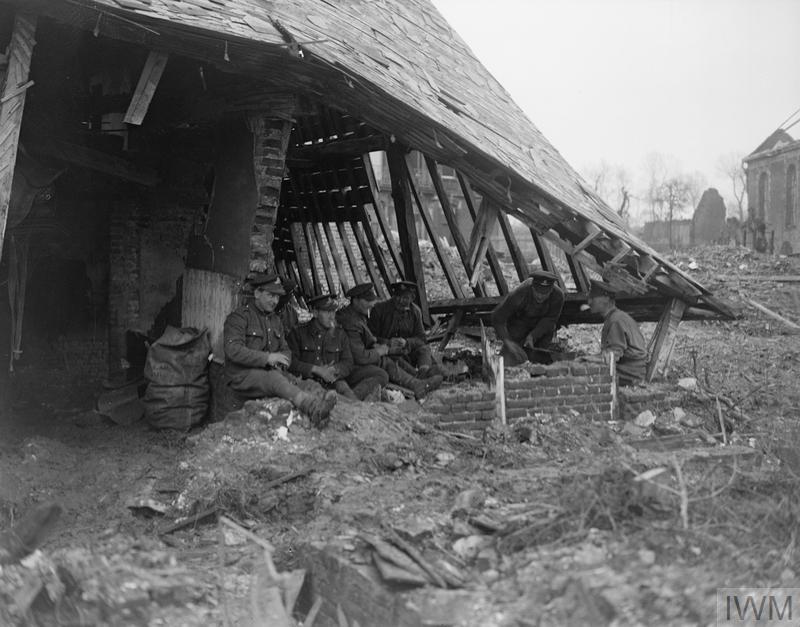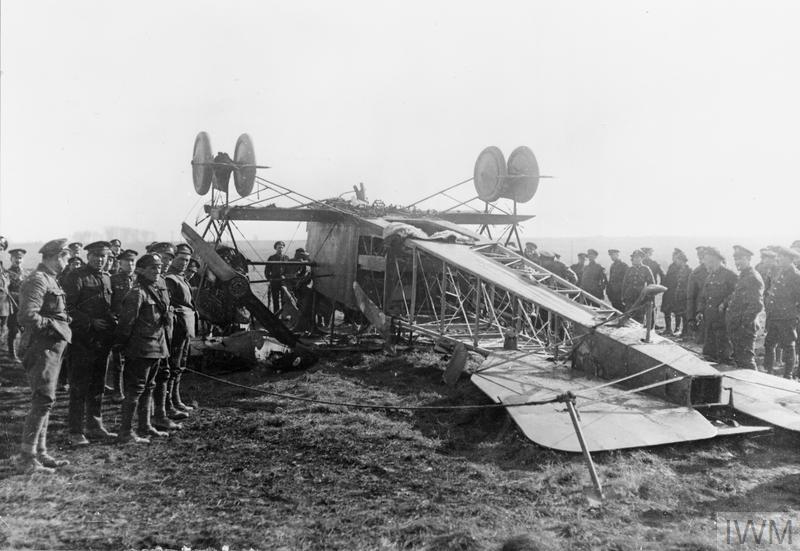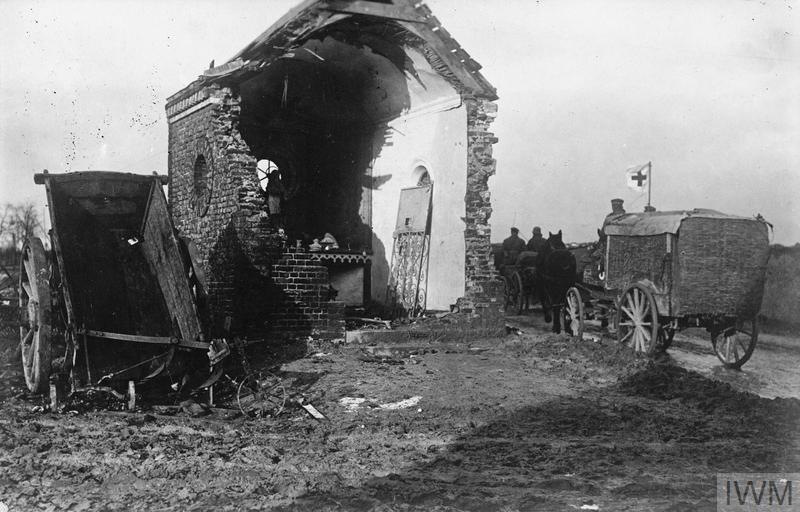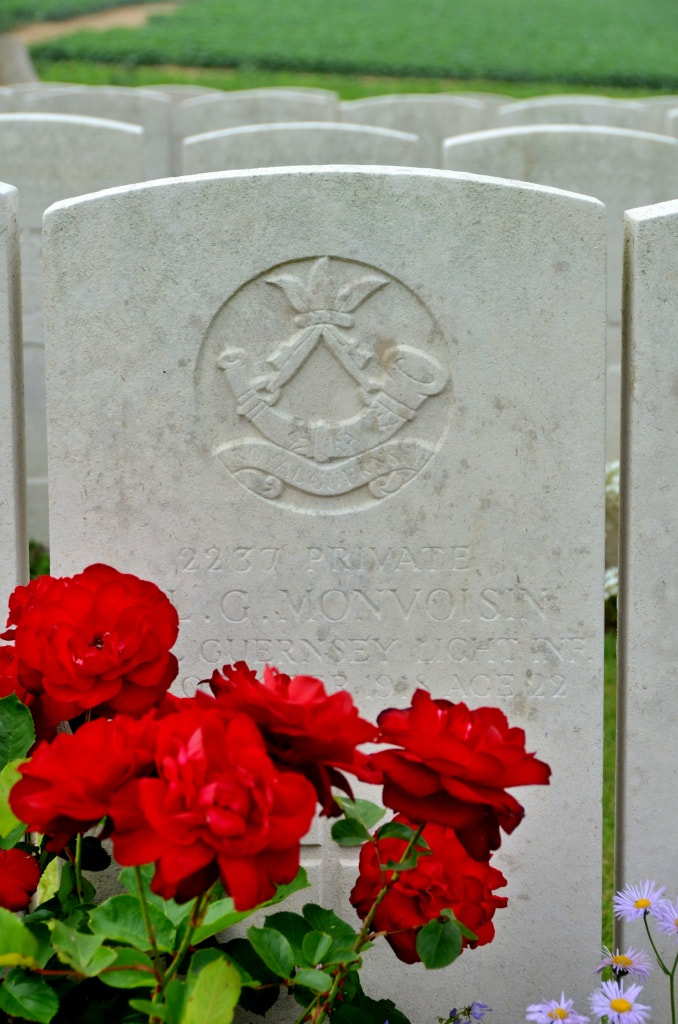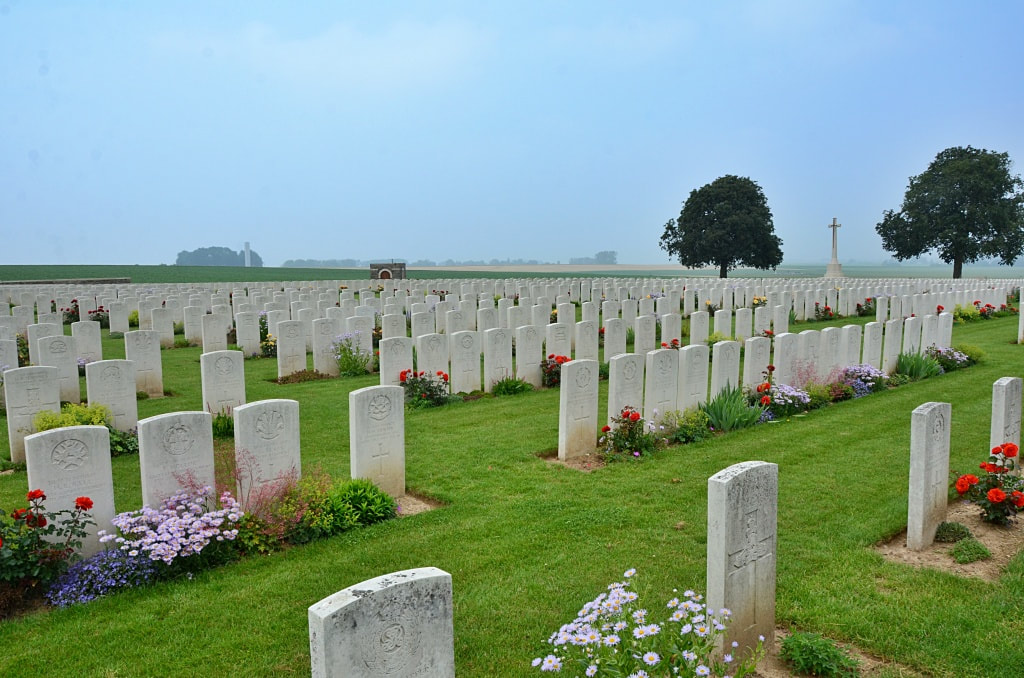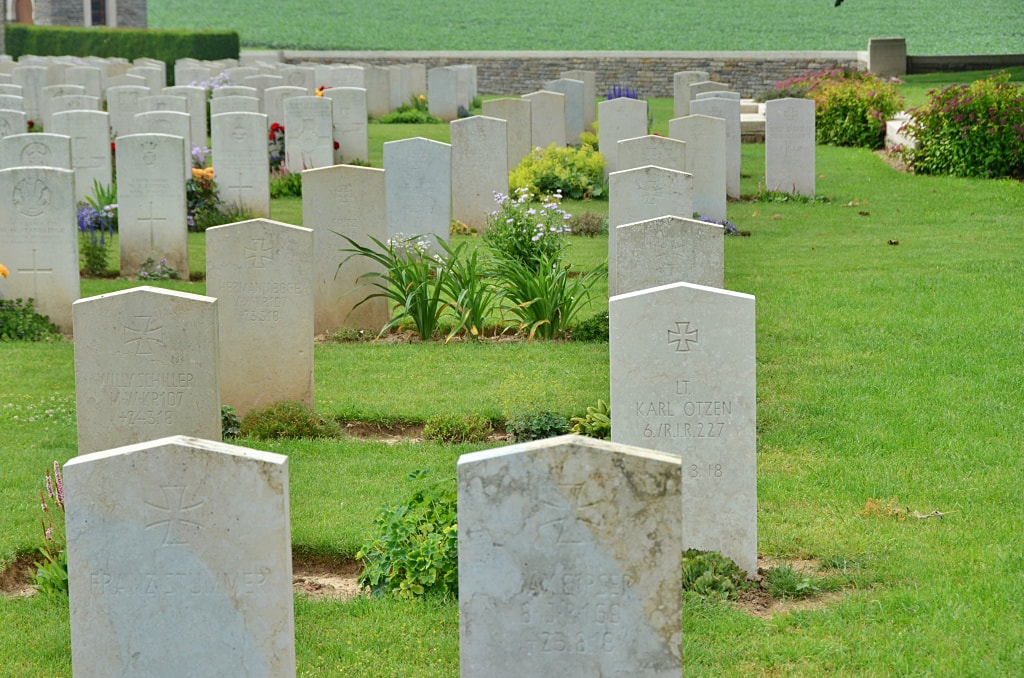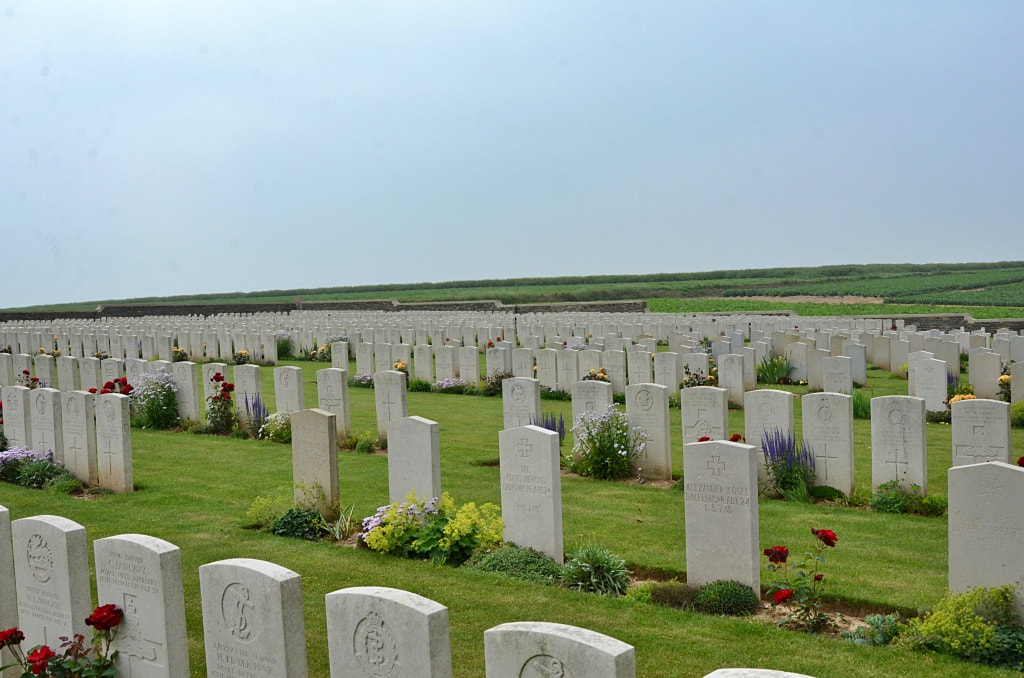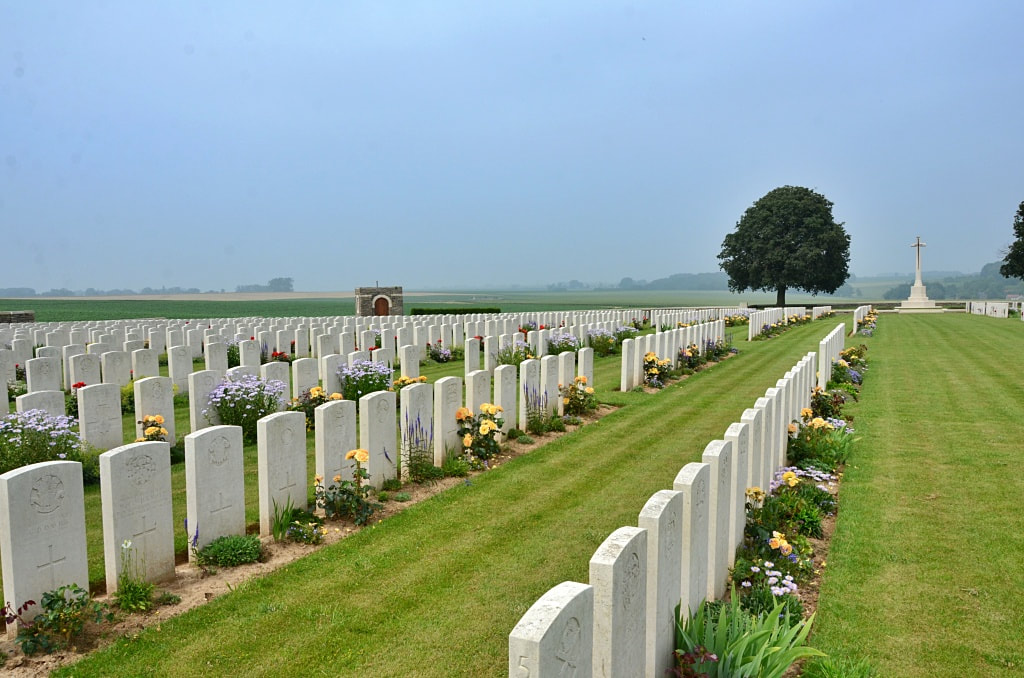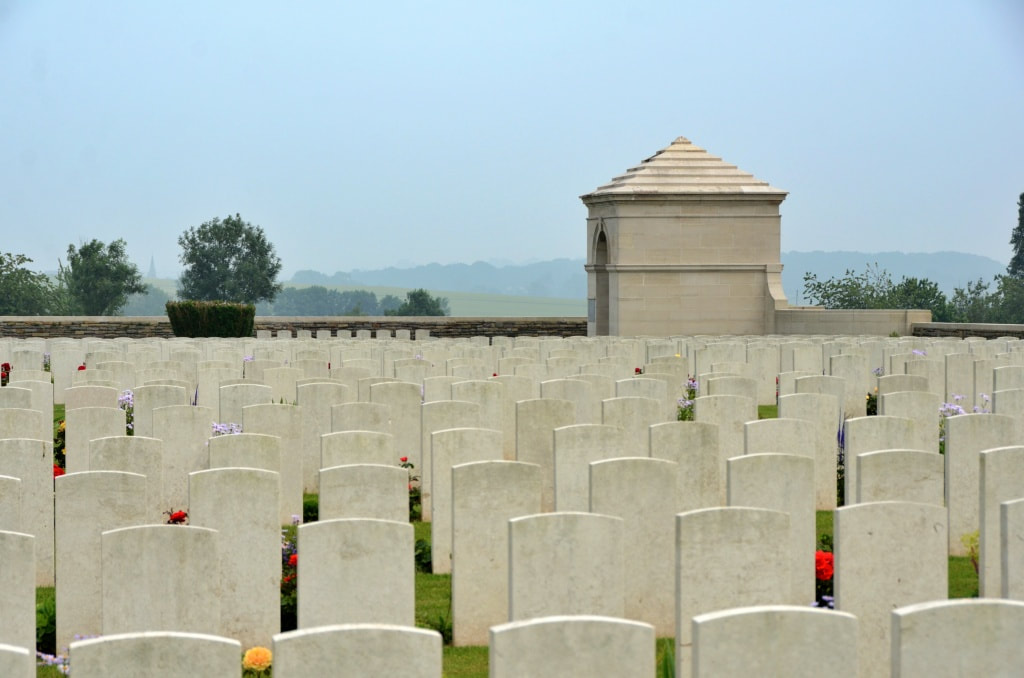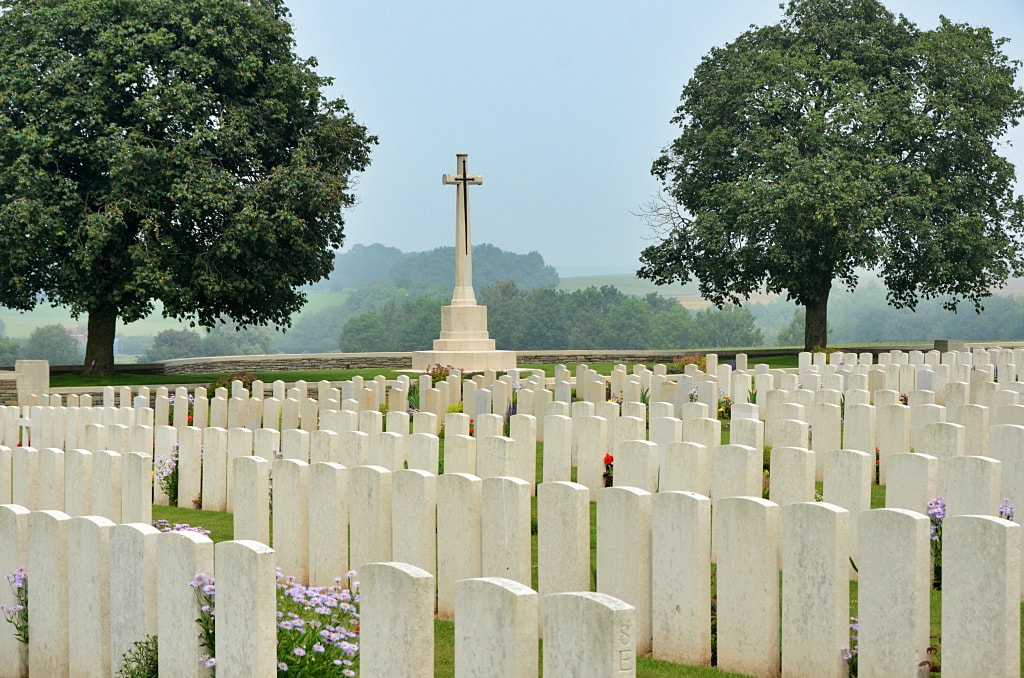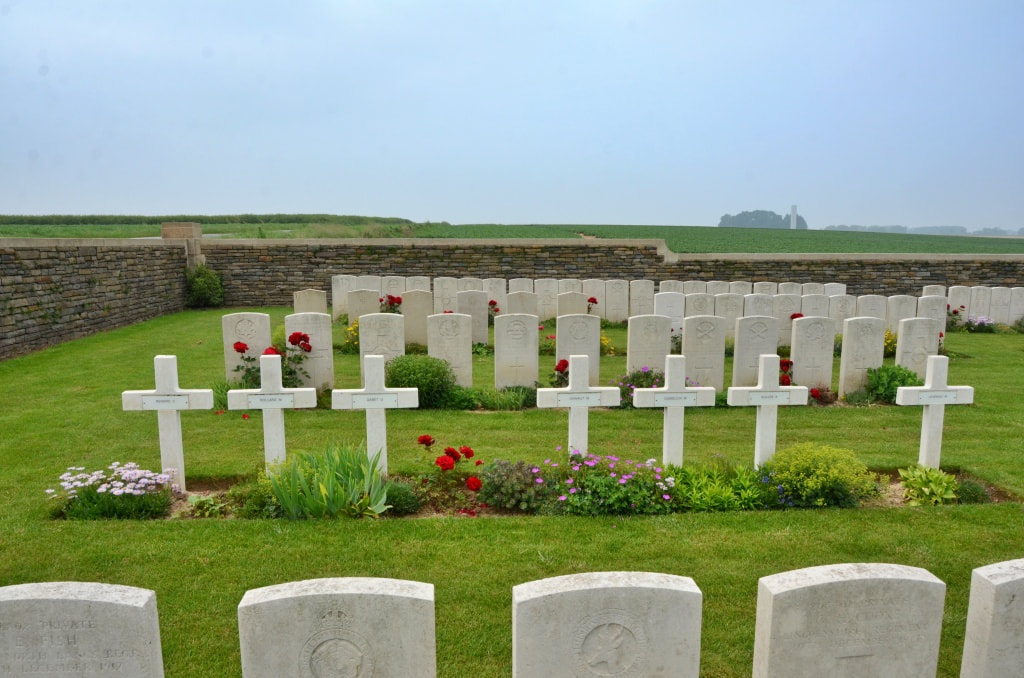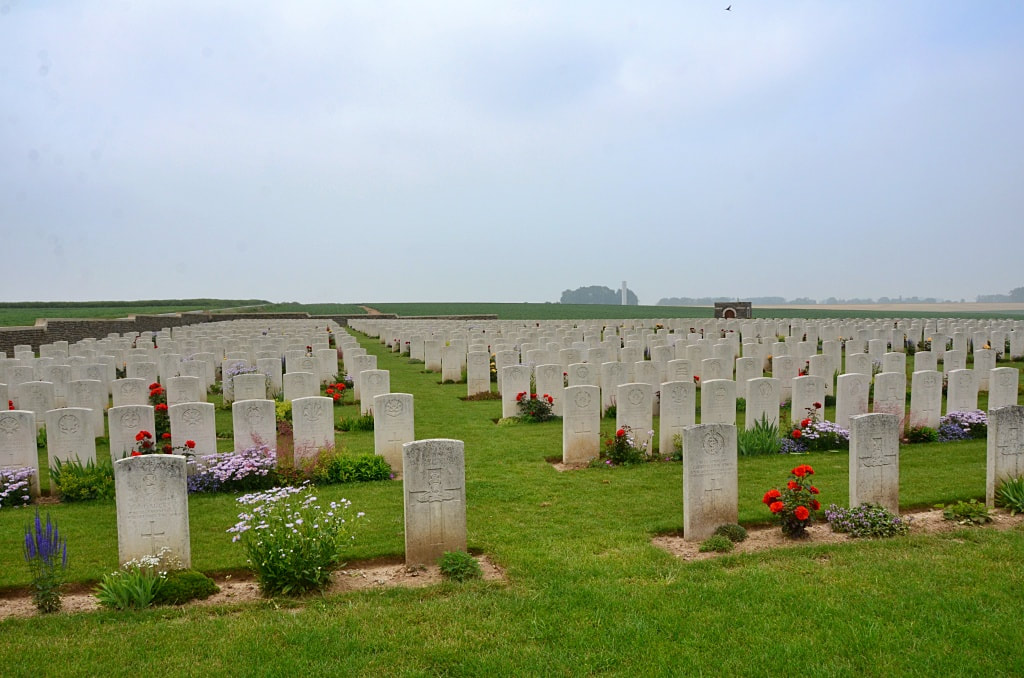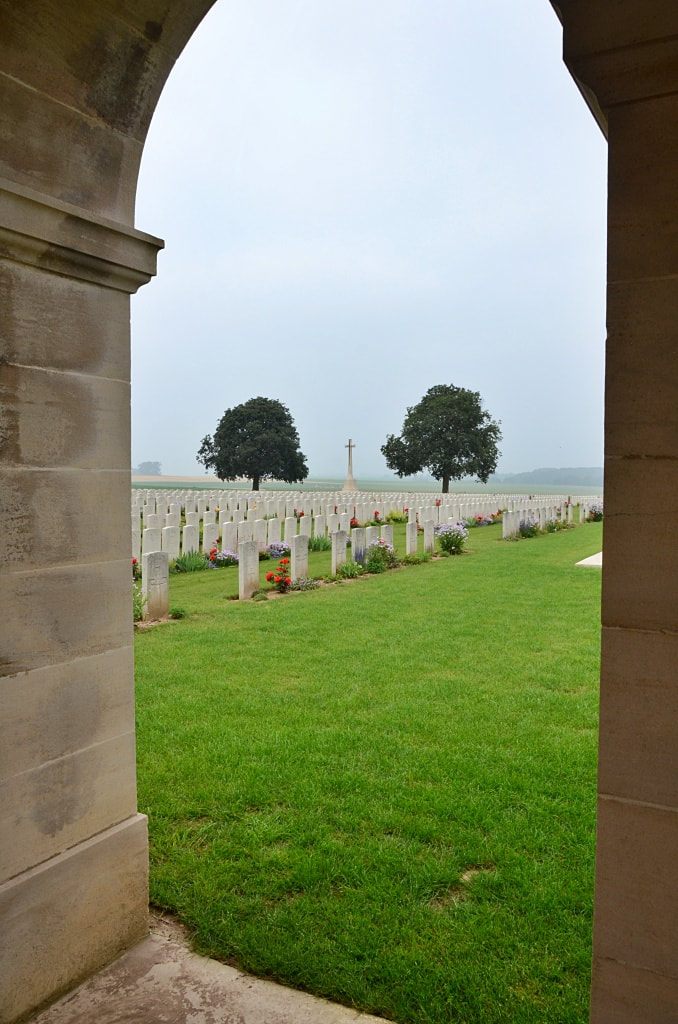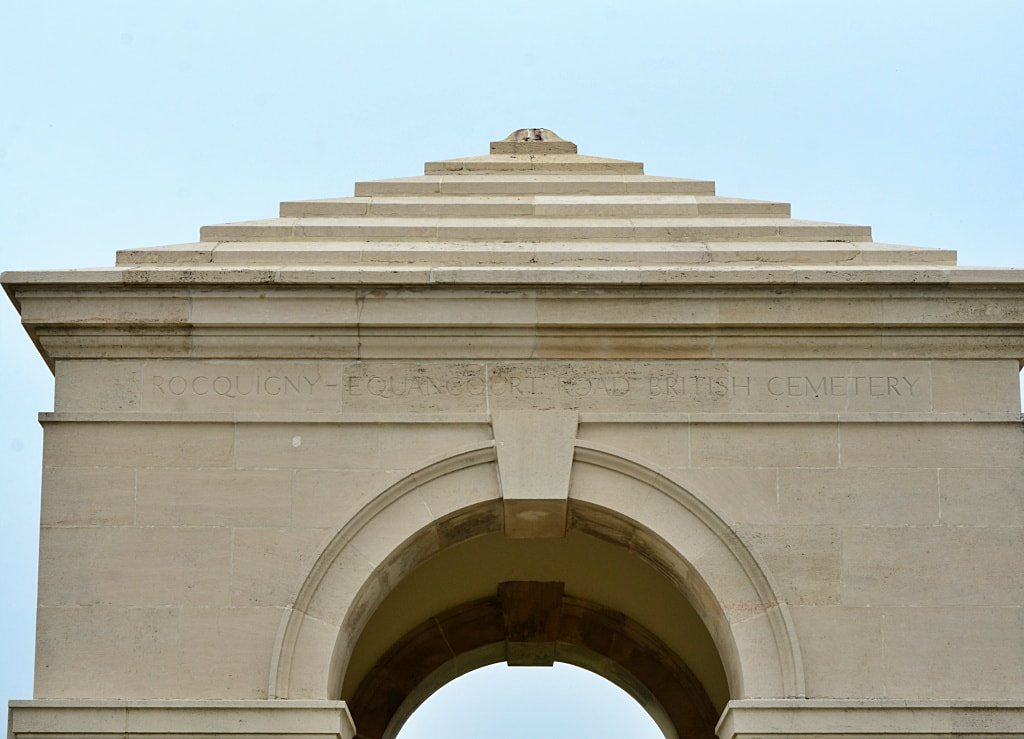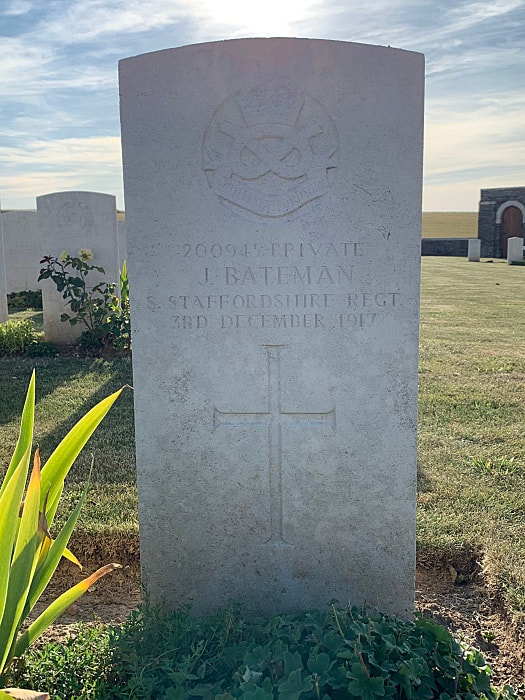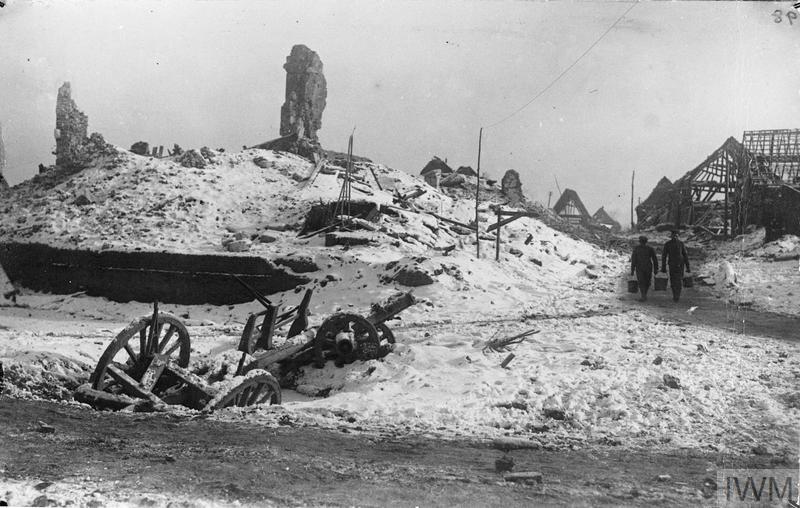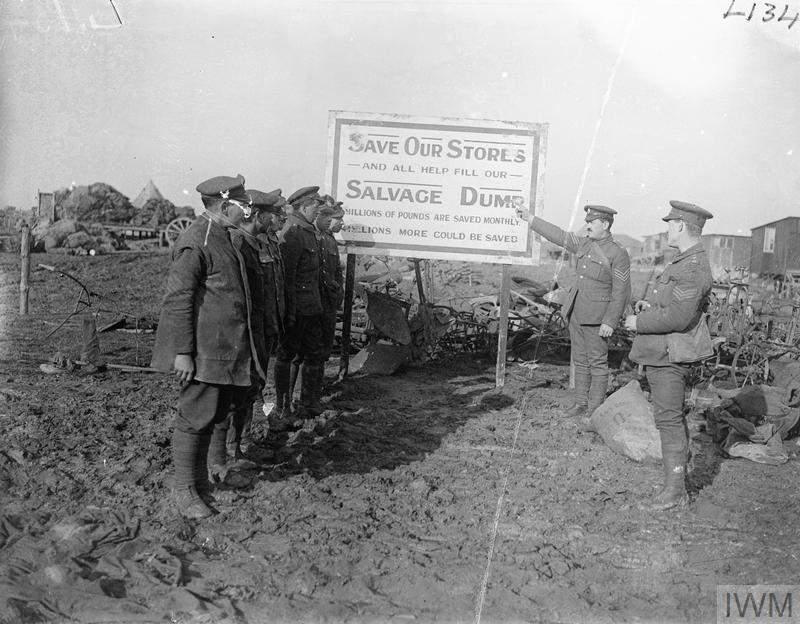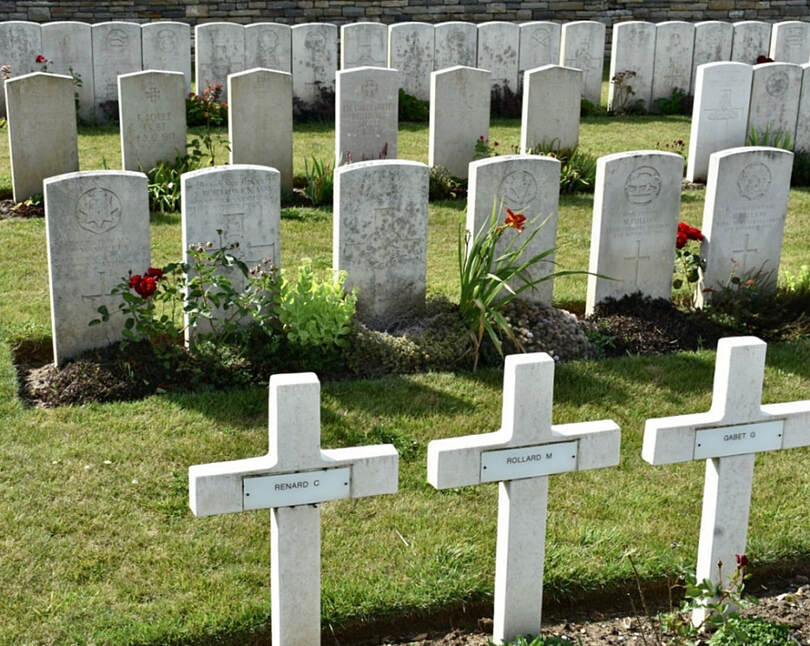ROCQUIGNY-EQUANCOURT ROAD BRITISH CEMETERY
Manancourt
Somme
France
GPS Coordinates: Latitude: 50.04405, Longitude: 2.99008
Location Information
Rocquigny and Equancourt are two villages in the Department of the Somme, some 13 kilometres north of Péronne and 12 kilometres south-east of Bapaume. Rocquigny and Equancourt are approximately 8 kilometres apart and the Rocquigny-Equancourt British Cemetery lies about halfway between the two villages on the north side of the road just west of the crossing road from Etricourt to Ytres.
Visiting Information
The location or design of this site makes wheelchair access impossible.
Historical Information
Étricourt was occupied by Commonwealth troops at the beginning of April 1917 during the German withdrawal to the Hindenburg Line. It was lost on the 23 March 1918 when the Germans advanced, but regained at the beginning of September.
The cemetery was begun in 1917 and used until March 1918, mainly by the 21st and 48th Casualty Clearing Stations posted at Ytres, and to a small extent by the Germans, who knew it as "Etricourt Old English Cemetery". Burials were resumed by Commonwealth troops in September 1918 and the 3rd Canadian and 18th Casualty Clearing Stations buried in it in October and November 1918.
The cemetery contains 1,838 Commonwealth burials and commemorations of the First World War. 20 of the burials are unidentified and nine Commonwealth graves (6 of which were made by the Germans) which cannot now be found are represented by special memorials. The cemetery also contains 198 German war burials and the graves of ten French civilians.
The cemetery contains 2,045 burials and commemorations of the First World War.
Total Burials: 2,045.
Identified Casualties: United Kingdom 1,745, Germany 195, Canada 34, New Zealand 21, South Africa 12, Australia 5. Total 2,012.
Unidentified Casualties: Commonwealth 20, Germany 3. Total 23.
Civilian Graves: France 10.
The cemetery was designed by Sir Reginald Blomfield and Noel Ackroyd Rew
15122 Serjeant John Harold Rhodes, V. C., D. C. M. and bar.
3rd Bn. Grenadier Guards
27th November 1917, aged 26.
Plot III. E. 1.
Husband of Lizzie Rhodes, of 27, New St., Pittshill, Stoke-on-Trent.
His headstone bears the inscription "Until The Day Breaks & The Shadows Flee Away"
Citation:
An extract from "The London Gazette," No. 30400, dated 23rd Nov., 1917, records the following:- For most conspicuous bravery when in charge of a Lewis gun section covering the consolidation of the right front company. He accounted for several enemy with his rifle as well as by Lewis gun fire, and, upon seeing three enemy leave a "pill-box," he went out single handed through our own barrage and hostile machine-gun fire, and effected an entry into the "pill-box." He there captured nine enemy including a forward observation officer connected by telephone with his battery. These prisoners he brought back with him, together with valuable information.
Headstone
Images in gallery below © Johan Pauwels
Shot at Dawn
200945 Private Joseph Bateman, 2nd Bn. South Staffordshire Regiment, executed for desertion 3rd December 1917. Plot VI. A. 27. Husband of Florence May Bateman, of 7a, Vauxhall Street, Dudley. He deserted when warned for the trenches at Givenchy, being arrested the next day at a PoW camp, wearing a sergeant’s stripes. Batemen escaped from the guardroom — only to be arrested 6 days later in Boulogne. (Putkowski,p.222)
200945 Private Joseph Bateman, 2nd Bn. South Staffordshire Regiment, executed for desertion 3rd December 1917. Plot VI. A. 27. Husband of Florence May Bateman, of 7a, Vauxhall Street, Dudley. He deserted when warned for the trenches at Givenchy, being arrested the next day at a PoW camp, wearing a sergeant’s stripes. Batemen escaped from the guardroom — only to be arrested 6 days later in Boulogne. (Putkowski,p.222)

